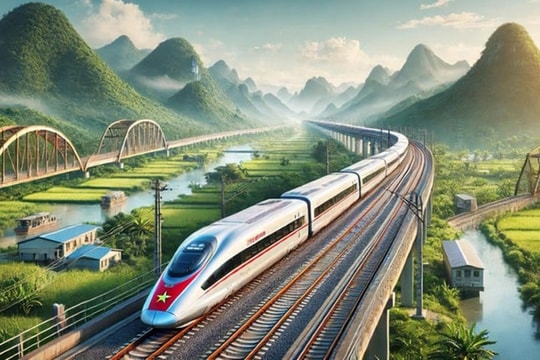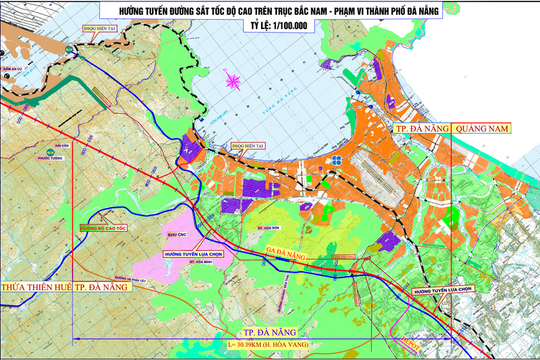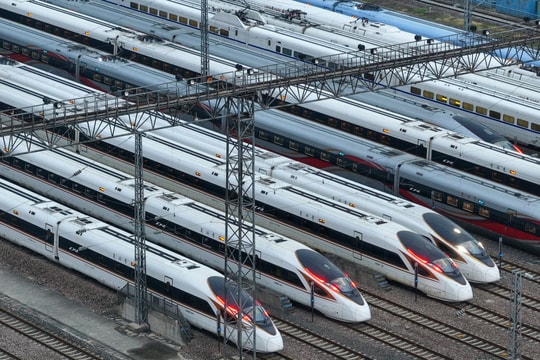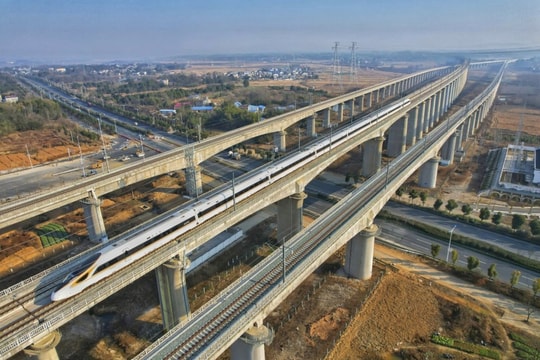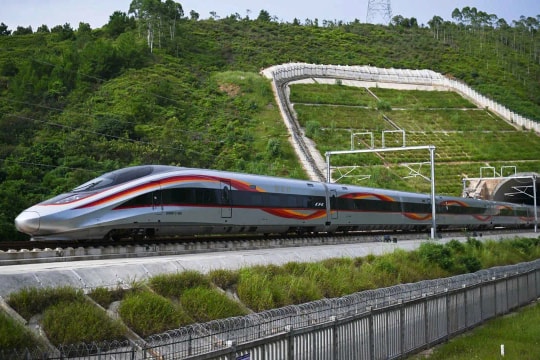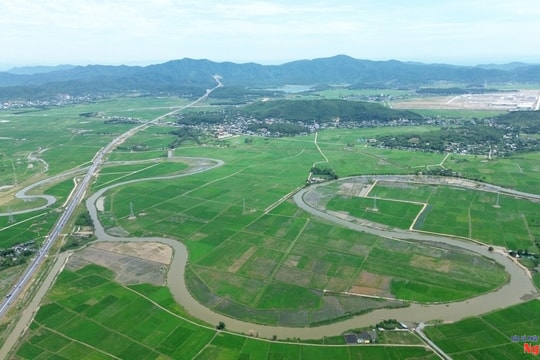North-South high-speed railway: Keep or abandon the old railway line?
If the North-South high-speed railway line for both passengers and freight is combined, the freight train speed will only reach 130 km/h. Large investment but low speed operation will not be effective.
Deputy Minister of Transport Nguyen Ngoc Dong said that the pre-feasibility report for the North-South high-speed railway project prioritizes the construction of two high-speed sections, Ho Chi Minh City - Nha Trang and Hanoi - Vinh, but they will only serve passenger trains, not freight trains.
Deputy Minister Nguyen Ngoc Dong informed: "Freight trains only operate on existing railways and will be upgraded and renovated according to schedule."
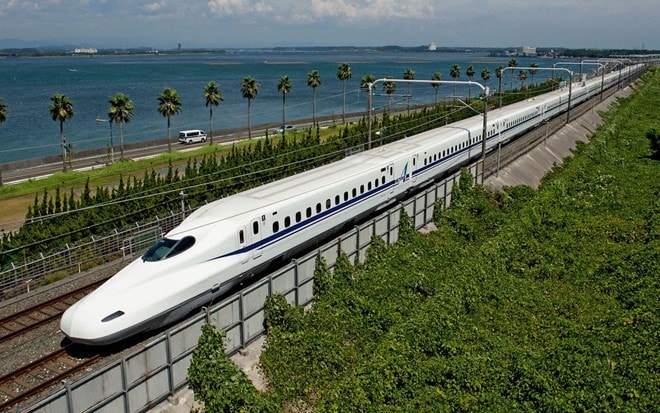 |
| Vietnam's high-speed train is expected to use similar technology to Japan's Shinkansen bullet train. Photo: Hitravel. |
However, Associate Professor Dr. Tong Tran Tung, who has many years of experience in the field of transportation, said that the North-South high-speed railway only carrying passengers and not freight trains as proposed by the Ministry of Transport to the Government is unreasonable.
"With the existing railway, freight trains run very slowly and cannot compete with roads, while roads cost a lot and have the potential risk of traffic accidents," said Mr. Tung.
On this issue, the Deputy Minister said that experts have given many different opinions, but a specific assessment by quantifying high-speed investment in passenger trains alone would be more effective.
"The old railway carries goods and the new railway also carries goods, so there is not enough cargo for both lines to operate. Moreover, if the new line is combined to carry both passengers and goods, the cargo speed will only be 130 km/h. Meanwhile, high-speed railway requires a large investment but is operated at a low speed, which is not effective," said the Deputy Minister.
Abandon the old railway line?
According to the Deputy Minister, the research process had a scenario of abandoning the old railway line, but everyone found that abandoning it was not suitable.
Specifically, if the old railway is abandoned, during the construction phase of the high-speed railway, there will be no railway operating on the North-South route. Thus, it will take several decades for a railway to run on the North-South route and during this period, rail transport will not be possible.
Monday,If we "peel off" the old railway, it will be very costly, because although the old railway is outdated, it has received a lot of investment over the centuries, so throwing it away would be a waste.
Tuesday,If we remove the old railway and build a new one that combines passenger and freight transport, the freight station and passenger station will have different functions. This means we will have to arrange many stations to avoid trains.
At that time, the high-speed railway will not have 24 stations but double the number of stations. This leads to ineffective operation of high-speed trains compared to the large investment.
In addition, experience from some countries shows that they still operate passenger and freight transport separately on old railways. For example, China allows the new and old lines to operate in parallel and high-speed trains only carry passengers, not freight.
Japan is similar, they still keep the old 1,067 mm gauge railway for freight transport, and the new expressway line is dedicated to passenger transport.

